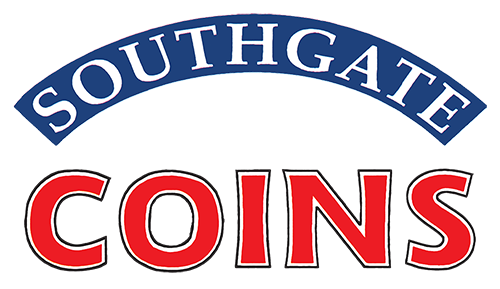This week, Somer tells the secrets of the Greysheet and also she paints a picture of some of the sardonistic people that use it.
The Greysheet Genius
By Somer Athari
An introverted individual comes into the store and as if there is a magnet attached to him, he lunges towards the display case that faces away from the other girls and me. With a dour disposition and in a totally sardonic snobbish kind of way, he asks if we have an 1889-CC Morgan and where to find it. We happily point him in the proper direction. After looking at the price of a PCGS graded 1889-CC Morgan Silver Dollar in AU-58, with pretty rainbow toning, our "genius" asks if we have a Greysheet he can look at to compare prices. When we ask if he is a dealer, he becomes flustered and just asks for the sheet in now a slightly raised voice. You've got to understand, we are very non-threatening college girls, who do not need to be put in our places. We don't work off commission; we're not here to high-pressure sell anything to anybody.
We give him a Greysheet, and notify Rusty and Marie that "we have a Greysheet Genius on our hands." After about five more minutes, his facial expressions become wryly perplexed. He begins to ask questions and makes accusations (under his breath no less) that our prices are "through the roof" on "CC" coins based on the prices in the Greysheet.
At this point we are ready to teach him a thing or two about Greysheets. Our boss wrote the book on "CC's" and we have a confidence that we are one of the largest suppliers of "CC" coins in the country. I show him the recent Coin Valuesmagazine, the Red Book, and explain to him why there is such a contrast in prices from Coin Values, the Red Book, and Greysheets. I also give him the option to view the "prices realized" from the past 20 auctions Rusty has participated in. He leaves, looking completely befuddled muttering something like our 89-CC shouldn't be priced at more than Greysheet"Ask" for the AU category.
The Coin Dealer's Newsletter, also known as the Greysheet has been around for over forty years. For the past ten years or so, this sheet, along with its cousins, the Bluesheet and Greensheet, have become available to the entire collecting community as a whole. The editors have had to put disclaimers all over their newsletter informing the retail coin collectors to beware that these prices are "wholesale" prices and may vary depending on each particular coin. Greysheetswere originally used as an indicator of what dealer-to-dealer prices were averaging on a national level, mostly for coins available in bulk quantity.
Most dealers in the coin industry have many pricing resources to supplement the Greysheet that help determine fair market prices for coins and there are many references available for retail collectors as well. Problems and misunderstandings can arise when these dealer resources like the Greysheet become available to the public at large, and the average coin collector attempts to use these resources without knowing how to interpret the pricing information.
It's as if a vintage automobile collector asked for a similar wholesale price guide, not so much considering the rarity of the car, but instead desiring the whole process to be a black and white issue. This antique "car nut" is trying to explain that a dealer across the country paid a certain amount for the same car, only the details of the transaction are limited to make, model, and year, but of course no picture. But there are so many factors influencing the value of a classic collectible car that can change the price significantly like paint color, accident reports, tire condition, type of interior, replaced engine work, not to mention the price that the seller bought the car for originally.
This example can be applied to any category of collectibles where pricing information is somewhat intangible, and certainly applies to rare coins. Many of the coins in our display cases cost far more than Greysheet prices, because we are attempting to offer the best coins possible to our customers, which often causes us to pay more than other buyers around the country.
Like we tell our customers in the store and nationwide, it is more pertinent to ask what our mark-up is and what our buy-back margin is. People like Mr. "Sardonic Snob" mentioned previously don't seem to comprehend this concept.
Don't get me wrong, the Greysheet is a valuable tool (if you know how to use it) and it is especially handy if you want to buy a proof set, mint set, or a modern commemorative. Then you will find the Greysheet to be your friend! However when it comes to rarities the Greysheet is rather useless, because people will pay any price for anything that would finish their collection, whether it is a rare coin or a classic car.
Just a helpful reminder, the next time any of you retail customers or part-time dealers ask for a Greysheet in a coin shop, please keep our flustered expert on prices for 89-CC's in mind, so you yourself don't become a self proclaimed "Greysheet Genius."
Your honestly helpful correspondent,
Somer
PS: For information on what it means to be a "Greysheet Buyer," please check out Chapter 10 in Rusty's book, The Mint on Carson Street.
